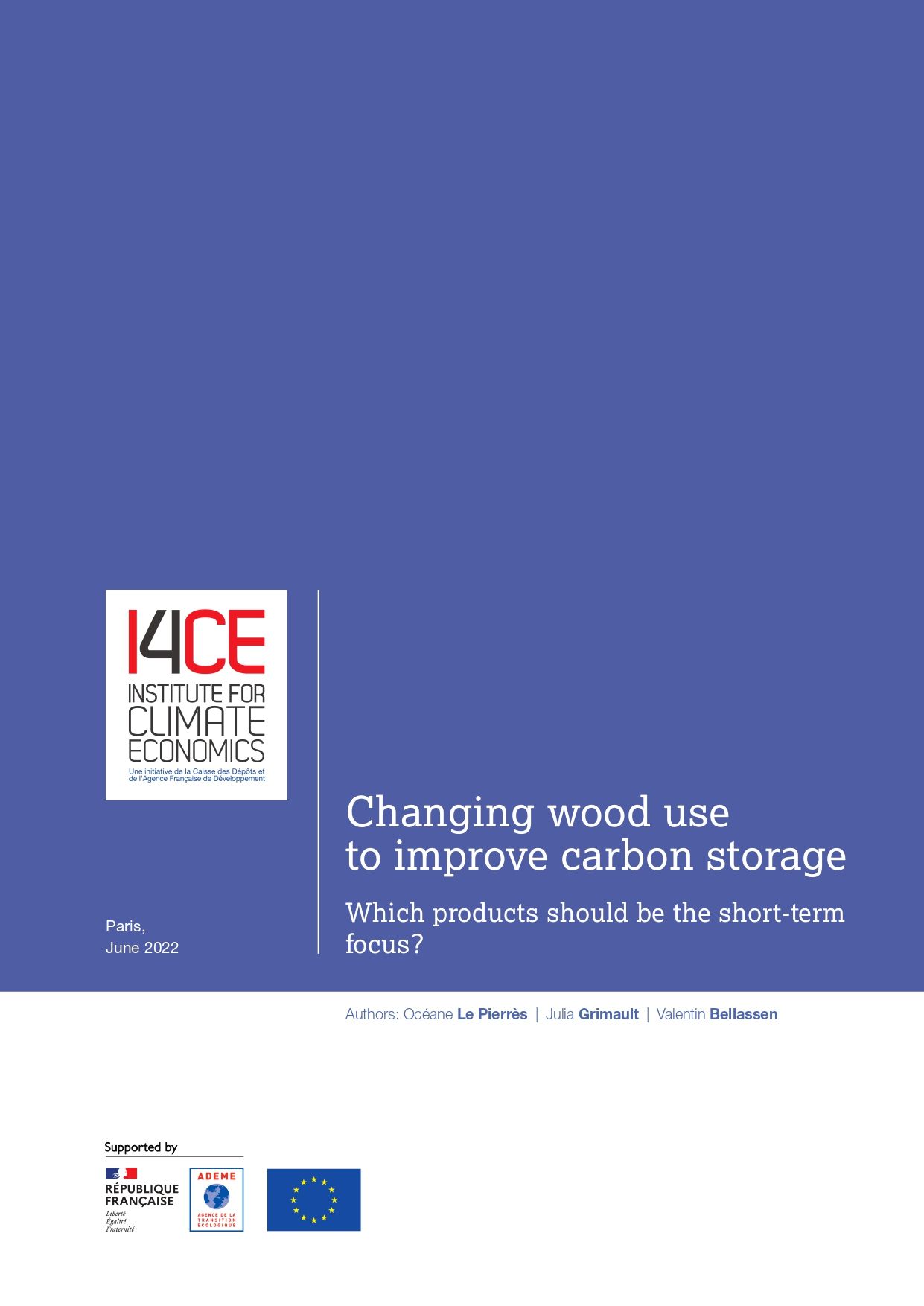Changing wood use to improve carbon storage: which products should be the short-term focus?
In addition to debates about the right level of wood harvesting, another issue is equally crucial from a climate point of view: what is the best way to use the harvested wood? France’s long-term strategy, the Stratégie nationale bas-carbone (SNBC), calls for an increasing proportion of wood to be directed towards long-life wood products such as those used in construction, which store carbon for long periods. The aim is to redirect part of the resources currently dedicated to shorter uses, such as paper and energy production, towards these longer-lasting uses. While the objectives are very ambitious, the strategy does not come with the policies needed to achieve them. I4CE has therefore assessed the technical feasibility of redirection of the wood use, and has identified the most promising production chains of long-wood products.
Better usage of timber: limited immediate potential, but promising in the longer term
Timber is wood of the highest quality, and most of it is already used as a long-lasting material. However, some wood of this quality does not fulfil its technical potential, and is used for short-lived purposes, such as household heating. This mainly relates to hardwoods, and to woods of small diameter or low quality.
Developing outlets for these wood types could increase the proportion of timber in the harvest, particularly that dedicated to long-lasting products. The use of products that are less restrictive in terms of resources used, such as engineered wood products, could enable these woods to be better used. However, these developments still require R&D and major changes in the industry, which reduces their short-term potential.
Promising short-term sectors: panels and insulation
Wood processing by-products (e.g. sawmill off-cuts) and wood of lower quality and smaller diameter are used extensively in the paper and energy industries (see diagram below), but can also be used for longer-lasting purposes: such as in the construction sector for insulation, or walls and floors for example, and in the furniture industry for the manufacture of desks, kitchens, etc.
The panel and insulation industries are considered particularly promising for changing wood usage, because they share the same resources as the paper and energy sectors. It is therefore technically possible to redirect some of these resources towards these industries. Indeed, the production processes of these products present few technical issues that would prevent the redirection of these resources. While some technical challenges have been identified, but innovative solutions already exist in France and abroad, indicating that, with the right investments, these constraints could be quickly overcome.
Let’s take advantage of the favorable political context to guarantee sufficient outlets for these markets
The development of these sectors requires the implementation of an industrial policy to develop production capacity, as well as the identification of the right economic and regulatory incentives to expand outlets for the most promising products. The potential development of these products is vast, and justifies the inclusion of a strong reorientation objective in France’s SNBC: we estimate the maximum technical potential for additional wood-based panels and insulation consumption to be between 15 Mm3 and 30 Mm3 per year, according to ‘trending’ and ‘ambitious’ construction and renovation scenarios respectively. However, our calculations confirm that the SNBC’s quantitative targets for the consumption of long-life wood products are very high, and could only be achieved under a number of very ambitious conditions that are, far from the current reality:
- that wood-based panels and especially wood-insulation become more popular than other materials in the construction industry;
- that the annual renovated surface area increases as sharply as set out in the SNBC, which corresponds to a total renovation of the housing stock to a very high level of energy efficiency in less than 30 years;
- that the export of these products develops to compensate for the otherwise desirable development of panels made from recovered used wood.
Nevertheless, if the quantitative targerts projected today seem overestimated given the current state of the market, these developments reflect the extent of the major transformations in our production and consumption habits required to achieve carbon neutrality by 2050.
New support measures are creating a favorable environment for such a development, such as the first actions following the series of working groups on the national forestry and wood sector (Assises de la Forêt et du Bois, 2021-2022), the new buildings standards (RE2020), which could soon promote bio-based materials consumption, and the energy renovation objectives, which could be an ideal springboard for securing major outlets for wood-based insulation.
This study thus therefore leads to three main policy recommendations for changing wood use:
- to make wood-based-panels and insulation more competitive than alternatives (plaster, concrete, glass wool, etc.): these are the two most promising sectors in terms of redirecting wood use;
- to make the use of wood as a material more competitive than the use for energy: in addition to studies that cast doubt on the benefits of fuelwood for the climate, fuelwood is the main resource that can be redirected from short to long- term usages;
- to conduct a more detailed study of the potential for increasing the proportion of timber in the harvest,particularly through the development of engineered wood.
Click here to see the flowchart


